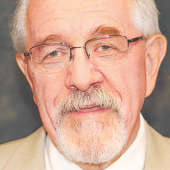- Christmas shopping is done, presents wrapped, strings attached? (12/14/16)
- Cecil is dead and human lives are threatened every day (8/12/15)
- As state flags go, Nebraska's ranks 50th (7/8/15)
- When everything looks like a nail (4/29/15)
- Who remembers to coal slurry pipeline debate? (3/11/15)
- More revelations in Department of Corrections mess (12/17/14)
- The Legislature becomes more Republican (11/19/14)
Opinion
Budget debate looms in Legislature
Wednesday, May 1, 2013
As the clock ticks on the 103rd Legislature-First Session, lawmakers face a deadline for dealing with the Biennial Budget. Statute says that the nine-member Appropriations Committee has to have the document ready for consideration by the full Legislature no later than the 70th day of the 90-day session (May 1) and it has to be passed by lawmakers by the 80th day.
The committee, chaired for the first time in decades by a Democratic senator in the officially non-partisan Unicameral, is nearing completion of their budget document, which is based on a lengthy series of public hearings and reviews of state agency requests. Also on the table before the committee, which includes three new members this year, are the proposals from Republican Governor Dave Heineman.
Nebraska's Economic Forecasting Advisory Board will have two meetings under its belt as it finalizes revenue projections for general fund receipts used by the Legislature to craft the state's budget. When the group met in February it revised its October 2012 projections upward by $53 million, raising revenue projections by 5.5 percent to $3.87 billion for fiscal year 2012-13. Projections for FY2013-14 also were raised 3.1 percent to $3.96 billion and projections for FY2014-15 were raised 4.5 percent to $4.1 billion.
The committee's preliminary budget calls for $3,806,587,879 spending in fiscal year 2013-2014 and $3,989,765,536 in fiscal year 2014-2015. Both are under the projected income of $3.87 billion for FY13-14 and $4.1 billion for FY14-15. The committee's budget is also $19.9 million leaner than Heineman's proposed budget. Good for them, especially if they can stave off any gubernatorial pressure to cave on some of his pet projects or promises.
Major differences between the committee proposal and the governor's proposal include: the University of Nebraska; health care reform; developmental disability; construction of a chemical dependency unit; state colleges; community colleges; retirement programs for schools, judges and the State Patrol; early childhood education and salary increases for state employees.
Agency operations account for the biggest share (34 percent) of money spent in the budget. Aid to local governments accounts for 33.4 percent, aid to individuals 32.1 percent and construction 0.6 percent.
Agency operations include the costs of actually operating state agencies (including costs such as employee salaries and benefits), data processing, utilities, vehicle and equipment purchases, fuel and oil, and the like. Although there are 47 state agencies that receive General Fund appropriations from the Legislature through the budget process, higher education (University of Nebraska and State Colleges) and the six largest agencies (Health and Human Services, Corrections, Courts, State Patrol, Revenue, and Retirement Board) account for 89 percent of state operations. Most of the General Funds for the Retirement Board are actually state contributions for the K-12 School employee retirement plan.
Aid to local governments includes school aid (the Tax Equity and Educational Opportunity Support Act), special education, community college aid and homestead exemptions.
Aid to individuals reflects the largest overall growth in the proposed budget with a net increase of $85.5 million for FY2013-14 which includes a $28.6 million increase for Medicaid eligibility and utilization, $18.3 million to offset a lower federal Medicaid match rate, $14.6 million for a 2.25 percent Department of Health and Human Services provider rate increase, and $12.5 million for projected higher participation in Medicaid and Children's Health Insurance under the Affordable Care Act health care reform and $4.2 million for childcare rates. Increased funding is also provided for the developmental disability program including funds for new clients transitioning from high school and funds to help reduce the waiting list.
Then there is the matter of the statutory Cash Reserve fund, the unobligated balance the state has kept on the books -- thanks to the wisdom and urging of the late Sen. Jerome Warner of Waverly, the longest serving Appropriations Committee Chairman. It is that very fund that has kept Nebraska out of the financial crises faced in recent years by a number of states that have been forced into deficit spending for a variety of reasons.
At the end of fiscal year 2012/13, Nebraska should have $384.1 million in its piggy bank. Those funds can be transferred in small amounts to meet emergencies as long as the plan to transfer the money is accompanied by a plan to reimburse the fund as soon as possible.
Thanks Senator Warner. It's nice to recognize our generally conservative fiscal roots in Nebraska every couple of years while the rest of the country scrambles.

